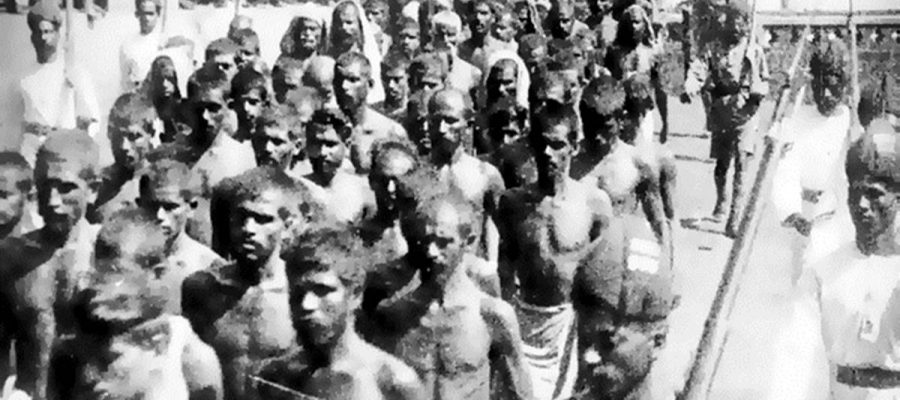It was not different from other militant peasant uprisings in which peasants attacked landlords and local moneylenders because they were the representatives of imperial oppression
Misrepresentation of facts, distortion of history, appropriation of some historical figures and events while negating or falsifying others are standard techniques in the Sangh Parivar’s “toolkit”. This urge to rewrite Indian history stems from a deep-seated sense of inferiority. When the Indian masses were coming together against imperialism, the RSS and other fundamentalist forces had extended cooperation to the British. The recent expression of this anxiety was when a senior member of the BJP-RSS tried to give a communal colour to the Mappila Rebellion of 1921 by calling it “one of the first manifestations of Talibani ideology in India”. It’s a description devoid of historical context.
The Jamaican activist and politician Marcus Garvey said, “A people without the knowledge of their past history, origin and culture is like a tree without roots.” If the Indian freedom struggle with its various branches can be envisioned as a tree, the RSS would have no branch to claim. That’s what moves them to try to uproot the tree of history itself and replace it with their false and divisive narrative.
Denigrating the Mappila Rebellion as a manifestation of a Talibani mindset is another case of the RSS “othering” a section of the Indian population by looking at every event from a communal “us versus them” perspective. That way, most peasant insurgencies would have a communal angle — Hindu, Muslim or Sikh.
Looking at the history of the freedom movement primarily through the lens of religion overlooks its inclusive character and undermines the role of class-based struggles aimed at overthrowing both the British and their local collaborators. The use of religious, caste, tribal or regional affinities for mobilisation was prevalent until the freedom movement evolved a coherent programme to fight the British, and people from all faiths started subscribing to it. Frequent references were made to a dharam raj or a golden age in the struggles of tribals against outsiders, both the British and their local supporters in the Chhota Nagpur region. Vasudev Balwant Phadke, a Chitpavan Brahman, aimed at establishing a Hindu Raj through his group of social bandits, which included people from many castes. The use of religion as a mode of mobilisation gradually lost its sheen till the RSS, Hindu Mahasabha and Muslim League started using it again for sectarian goals.

In the early 1920s, the Congress under the leadership of Mahatma Gandhi gave a call for non-cooperation and included the demand of Khilafat to achieve Hindu-Muslim unity. The movement aimed at creating an anti-imperial front, including Hindus and Muslims. When the movement spread to Malabar, it took a violent form — peasants started attacking British officials and local landlords. In this aspect, it was not different from other militant peasant uprisings in which peasants attacked landlords and local moneylenders because they were the representatives of imperial oppression locally. Under the influence of some Khilafat leaders, the form of mobilisation and the expression of the rebellion became religious in some cases but, overall, it remained anti-imperial and anti-landlord in content. Gandhi resented the use of violence by the Mappilas but commended them for their bravery.
It took the British Army some time to wrest back the areas from the agitated peasantry. More than 2,000 rebels were killed followed by the ignominy of the Wagon Tragedy, where 64 rebels suffocated to death, without water or food, in a closed train wagon transporting prisoners to Bellary. These horrible deaths created a furore across the country and spurred the desire for independence amongst Indians.
Many rebels were sent to the Cellular Jail in Andaman where they were tortured. In 1924, the then British under-secretary to India, Robert Richards, said, “In July last, there were in all 1,235 Mappilas in the Andamans. Seventy-two were in the cellular jail, 12 in the adolescent gang, 40 agriculturists and self-supporters, and the rest in convict barracks.” After their release, many of them settled in the Andaman group of islands as agriculturists and fishermen. While visiting the islands with freedom fighter and CPI Leader N E Balram, I met and interacted with the families of those who survived the severe British oppression.
The inability of the RSS-BJP in engaging with peasant uprisings is ideological since their ideological affinity is towards capitalists and landlords — predominantly upper castes. The Communists, in contrast, have been at the forefront of peasants’ movements through the Kisan Sabhas and were instrumental in bringing legislations to abolish the zamindari system and bringing land reforms.
The class characteristic of the RSS-BJP has been on display through their attitude towards the farmers protesting the farm laws. The RSS tries to create discord among people on the basis of religion. However, the unity of the oppressed classes and castes has the potential to rise above this dichotomy and resist the onslaught of the RSS on our history, our present and future.
The writer is general secretary, CPI
Source: Read Full Article


